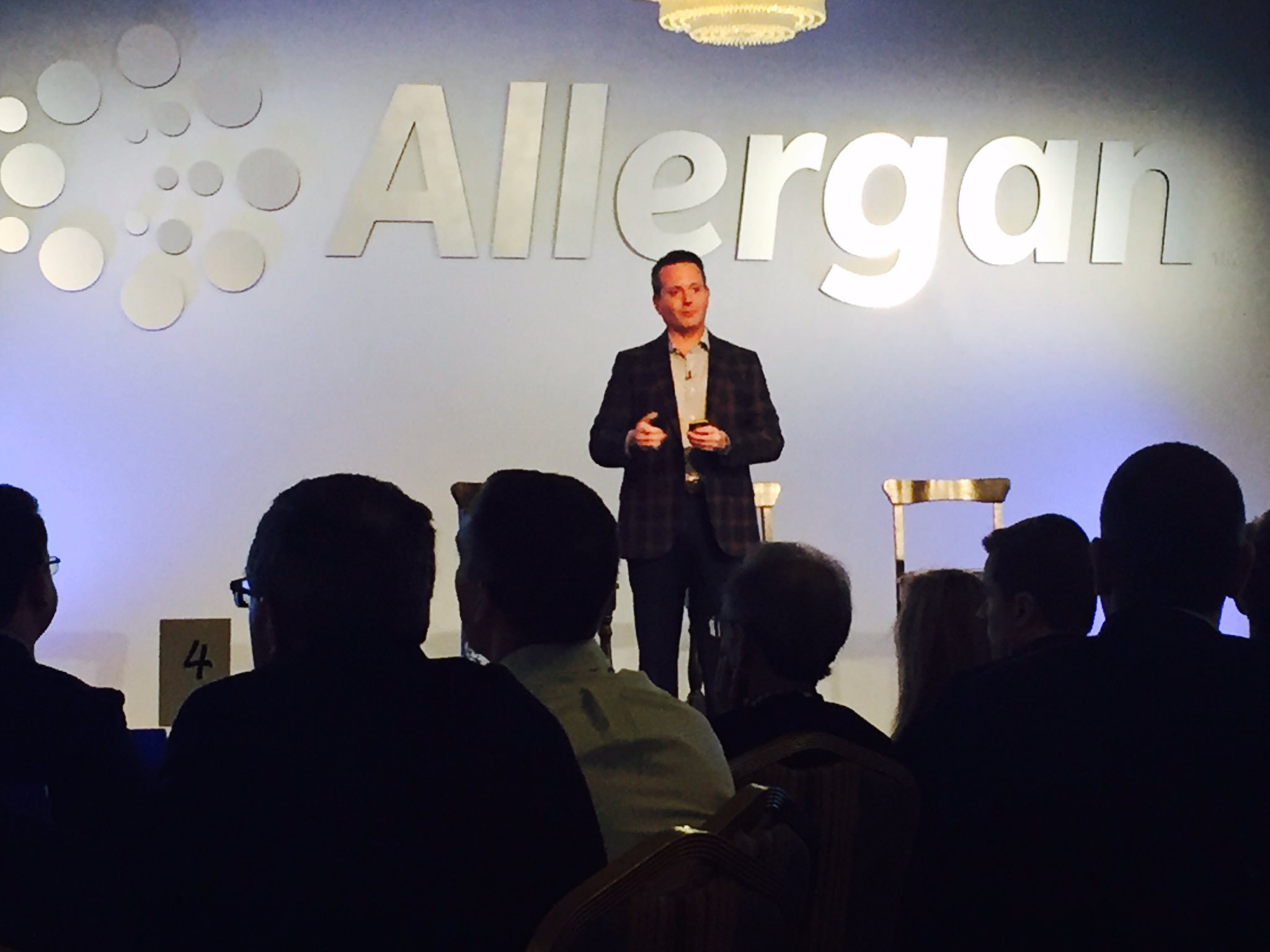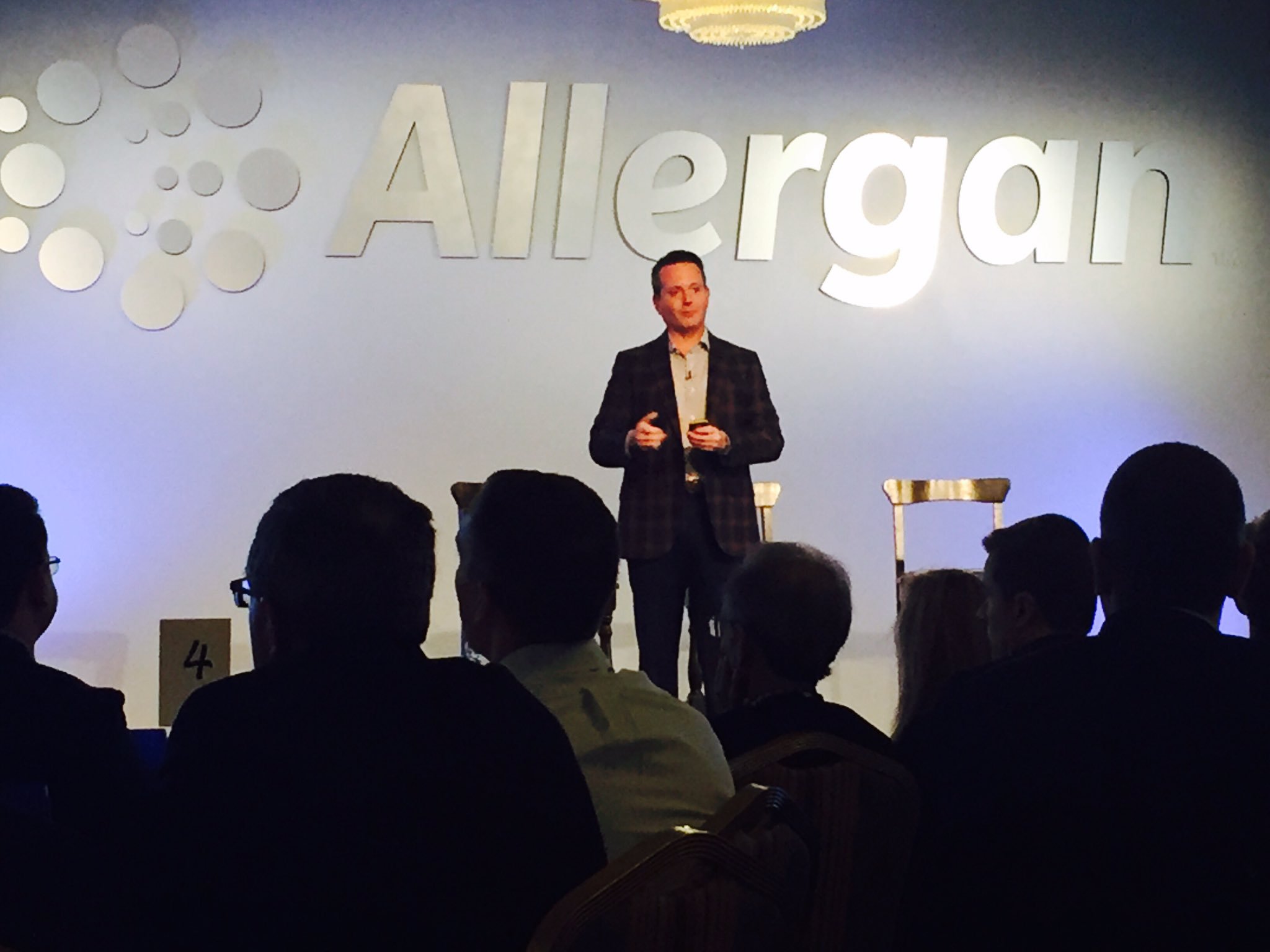When a scandal occurs in pharma, the whole industry is tarred by the same brush. We’re still suffering the ill effects of Martin Shkreli’s 5000% overnight price increase of a life-saving anti-parastic, from way back in 2015.
Pharma’s trust problem
Brent Saunders, Chairman & CEO of Allergan,sees this as part and parcel of doing business in this industry. Pricing will always be controversial within healthcare, because choosing between two sets of health outcomes is fundamentally different from choosing between two different brands of an electric toaster. The problem is: this reality isn’t widely acknowledged across the industry, which leads to complacency and a failure to recognize that trust must be actively cultivated between the industry and the patient. Saunders comments, “I’m utterly convinced my Allergan colleagues are authentic and are motivated by doing good things. But that doesn’t mean people are just going to trust us.” He continues, “Unfortunately, much of our industry expects this trust to be automatic. The reality is that there’s nothing automatic. We have issues with justifying our pricing. We need to build data around the value of our medicines. These things take time and effort, and trust is slow and hard-fought.”
But unlike other pharma leaders, Saunders sees another way forward. One year ago today, he proposed a solution: the codification of a ‘social contract’ that formalizes unwritten obligations between pharma and patients. Saunders argues vociferously that pharma is a qualitatively different kind of industry from consumer product businesses, and there is no escaping this. And while this recognition demands a respect for a special set of rules, it would be wrong to see it as an onerous burden. In fact, quite the opposite: it is an opportunity for leadership that can bring both social – and economic – returns.

At eyeforpharma we have long argued that patient-centric design delivers positively for the bottom line. There doesn’t need to be an imaginary trade-off between economic performance and social impact: there are benefits across the value-chain by embracing a patient-first approach.
This starts from the core. Energized talent will outperform your competition, meaning that by hiring the strongest people and also motivating them to give their best, company performance will improve as demonstrated by study after study. And this is something Saunders has personally observed since publishing the social contract:
“The results [of advocating for a social contract] have all been positive for us. We’re hiring the best people. We’re positive on media impressions and news coverage. We’re positive on on-the-ground conversations with customers. We’re positive on commercial performance. We’re positive on colleague reaction and it is very energizing.”
Indeed, Saunders expresses surprise that not more companies have followed in similar footsteps. The economic reality is that savvy leaders can position their organizations to reap benefits across the value-chain by embracing such an approach. Competition for patients in clinical trials is increasing, and those who deliver value to their communities will find it easier to recruit and retain the best talent.
We’ve seen through case studies, such as Novartis’ Gilenya campaign, that clinical trial patients can become powerful advocates for brands. Building these bridges then creates valuable opportunities for two-way communication. Patient communities want the latest information on options to manage conditions, while pharma gains the information to design products, delivery mechanisms, services and messaging that respond to genuine needs. By taking these steps to improve the patient experience of their product, pharma will improve outcomes and therefore create products that are more valued by regulators and payers.
Each one of these opportunities for improvement is incompatible with practices that violate the principles that Saunders has argued for in his social contract. It is well understood across brand teams that patient communities are increasing in number and activity online, fuelled by platforms like Facebook. With more people now relying on social feeds for new information, we’re entering a moment of convergence that is demanding a new accountability infrastructure for pharma that moves far faster and with far greater capacity than traditional regulators. The real point here is that, just as with other industries, companies who violate the social contract will no longer be able to fly under the radar, and risk a PR firestorm by failing to respect the rules. The example of the dramatic escalation from accusations of price gouging to a fraud convictionfor Martin Shrekli is a case in point.
Can an idea become a movement?
In order to change culture, the case for double-bottom-line impact must be consistently made to executives with the power to enact this change from stakeholders across the healthcare industry. When I launched The Aurora Aroject, we had immediate sign-ups from 800 people from 85 countries, showing a real appetite for change. In tandem, testimonials from leaders like Saunders show us the tangible benefits up for grabs for those bold enough to lead the charge.
It also means that the social contract, or similar concepts, cannot be articulated any longer by single individuals. Saunders can be commended for taking a bold step, but perhaps could be commended even further for indicating that he doesn’t hope for any ownership going forward.
“I, or Allergan, are not doing this because it’s all about us. It’s not even our key differentiator. I would love to see something like this supported more broadly. The real opportunity for our industry is to take a huge step forward together on this, so that the whole industry has its version. Where there’s a will, there’s a way.”
So when the winds of change blow, build windmills. The only question now for savvy pharma leaders should be where to start. For this we can draw another lesson from Saunders’ playbook. “This doesn’t need to be a costly process of self-examination, reinvention and culture change. Big gains can come from simple actions.” And this is his final lesson: “Just articulating the social contract has led to it institutionalising itself. For the sales rep riding around in their car, it has brought the conversation about patient assistance to the forefront. Meanwhile, many patients are accessing our medicines for free where they weren’t before. Each time you do something bold, it has repercussions. Indeed, our company mission is ‘Bold for Life’, and I am telling you, our approach and culture is very different from others.”
Related Content: Ipsen: Making Patient-Centricity A Reality Patient-Centricity: Decoding The BuzzwordThe Patient Journey: A Tool for Market Access?The Human Side of Patient-Centricity Précis: One year on, Brent Saunders of Allergan suggests to Paul Simms the case for expanding the pharma-patient social contract across the industryPremium`: Freemium`: Channels: Patients and MedicalChannelimage:
Précis: One year on, Brent Saunders of Allergan suggests to Paul Simms the case for expanding the pharma-patient social contract across the industryPremium`: Freemium`: Channels: Patients and MedicalChannelimage:  Original Article
Original Article

